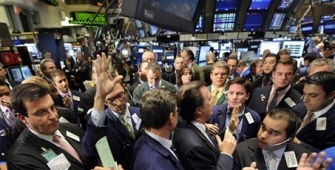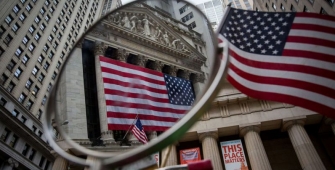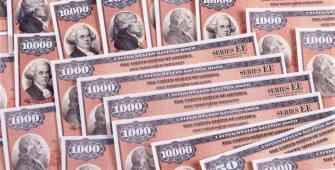Chow Tai Fook Gains Australian Government Approval for $3 Billion Deal
Hong Kong conglomerate Chow Tai Fook Enterprises Ltd. has obtained the approval of the Australian government regarding its bid for gas and electricity firm Alinta Energy Ltd.
According to a spokeswoman for Treasurer Scott Morrison, the takeover was approved with strict conditions. The deal has been approved by the Foreign Investment Review Board and the treasury declined to comment further.
The buyout bid from Chow Tai Fook valued Alinta at nearly four billion Australian dollars (US$3.02 billion), a person familiar with the topic said. Both companies did not reveal financial terms on the deal.
Chow Tai Fook, which is widely-known for its jewelry business, is the biggest in the world by revenue. For the conglomerate, this deal marks its first significant investment in Australia's energy industry, granting the company control of a utility with nearly 800,000 electricity and gas customers as well as a generation portfolio of as much as 1,957 megawatts.
The Hong Kong conglomerate said it plans to maintain Alinta's current senior management team and aims to expand business through investment in the energy market. The deal is seen to close by the end of April.
News are provided byInstaForex.
Please visit our sponsors
Results 1,551 to 1,560 of 3458
Thread: Forex News from InstaForex
-
25-04-2017, 03:11 AM #1551

-
26-04-2017, 02:34 AM #1552

Moody's: Rising Czech Koruna Will have Uneven But Manageable Impact for the Country's Banks

The appreciation of the koruna will impact Czech banks unevenly, with UniCredit Bank Czech Republic and Slovakia (UniCredit CzSk) and Raiffeisenbank, a.s. the most vulnerable to the shift and Ceskoslovenska Obchodni Banka, a.s. (CSOB) and Ceská Sporitelna, a.s. (Ceská) likely to be least affected. The rating agency notes that overall the impact will still be manageable due to the primarily domestic focus of the banks' operations and the Czech National Bank's commitment to limiting excessive currency volatility.
The Czech National Bank removed its CZK27 upper limit on the koruna-euro exchange rate on April 6, allowing the koruna to rise for the first time in three and a half years.
Moody's report, entitled "Ceská; CSOB; Komercní; UniCredit CzSk; Raiffeisenbank; MONETA: Impact of Rising Koruna Will Be Uneven But Manageable," is available on www.moodys.com.
Moody's subscribers can access this report via the link provided at the end of this press release.
"Local currency appreciation in the Czech Republic will filter through to the country's banks via various channels, such as corporate margins, funding costs, and the value of government securities," says Arif Bekiroglu, Assistant Vice President and Analyst at Moody's. "UniCredit Bank Czech Republic and Slovakia and Raiffeisenbank are more vulnerable than their peers due to material exposures to the non-retail segment, leaner capital and weaker profitability."
MONETA Money Bank, a.s. (MONETA) has a high exposure to small businesses but strong capital, and Komercní banka has a high exposure to corporates which tends to be less vulnerable, but weaker capital. CSOB and Ceská are likely to be least affected due to their low to moderate exposure to riskier segments relative to their solid capitalisation.
MONETA and UniCredit CzSk could see rising problem loans as a result of their exposure to small and medium-sized enterprises (SMEs). SMEs are the most vulnerable to an economic slowdown. Exports account for more than 80% of Czech GDP and a strong currency appreciation means that Czech exporters may lose competitiveness. However, ongoing economic recovery in euro-area economies should help to offset most of this impact and to create growing demand for Czech goods. The euro area is the Czech Republic's biggest trading partner, accounting for 65% of Czech exports as of year-end 2015.
Banks holding larger shares of government securities as available-for-sale (AfS) assets, such as UniCredit CzSk, Ceska and MONETA could also be negatively impacted. This is because foreign investors looking for currency gains could exit long-held positions in Czech government securities as the currency appreciates, lowering the securities' market valuation.
Funding costs will rise as benchmark interest rates increase. We expect a rise in benchmark interest rates to control inflation once the exchange rate settles and this will impact funding costs at RBCZ and MONETA more than their peers due to their tighter koruna liquidity.
Moody's notes that since many Czech banks are subsidiaries of euro-area parents and provide those parents with a substantial part of their profit, these parents — Erste Group Bank AG, KBC Bank N.V., Société Générale, UniCredit S.p.A. and Raiffeisen Bank International AG— could benefit from improved revenues and capital. This is because the euro-equivalent of their Czech subsidiaries' revenue and capital will improve and the dividend equivalent in euros will also be higher.
News are provided byInstaForex.
-
26-04-2017, 03:32 AM #1553

Wall Street Gains as Nasdaq Rises Above 6,000

U.S. equities advanced sharply as strong quarterly reports from numerous big-cap firms followed through. The Nasdaq Composite reached a record peak, while the Dow and S&P 500 were also near recent highs as solid earnings highlighted the health of corporate America.
The Dow Jones industrial average climbed 1.12 percent at 20,996.12, as Caterpillar led gains while Verizon was the top decliner. The S&P 500 rose 0.61 percent at 2,388.61, as materials led nine sectors up while telecommunications and utilities lagged behind. The Nasdaq composite advanced 0.7 percent at 6,025.49.
Caterpillar jumped 7.7 percent at $104.29 after earlier notching a multi-year peak of $104.71 while Mcdonald's bounced 5.6 percent to $141.71, both after exceeding profit estimates.
According to Thomson Reuters, total profits of S&P 500 firms are estimated to have increased 11 percent during the first quarter, the most since 2011.
The Nasdaq scaled a record level of 6,036.02, breaking 6,000 for the first time, powered by advances in index heavyweights Apple and Microsoft. The S&P 500 notched its day's peak after a report that U.S. President Donald Trump's tax proposal will be expected on Wednesday.
News are provided byInstaForex.
-
27-04-2017, 01:28 AM #1554

South Korea’s Real Gdp Grows Above Forecast in Q1 2017

The South Korean economic growth accelerated in the first quarter of 2017, the advanced estimate of the Bank of Korea showed. The preliminary data for the first quarter indicated that the real GDP grew 0.9 percent on a sequential basis, as compared with the 0.5 percent growth seen in the prior quarter. This is more than the forecast of 0.7 percent growth.
Gross fixed capital formation contributed the most to the first quarter growth. It expanded 4 percent sequentially. Within the gross fixed capital formation, construction rose 5.3 percent. Meanwhile, private consumption rose 0.4 percent, with overseas consumption by residents increasing. Expenditures on non-durable goods and services dropped. Exports grew 1.9 percent sequentially, while imports were up 4.3 percent, thanks to growth in imports and machinery and equipment and precision instruments.
On a year-on-year basis, South Korea’s real GDP grew 2.7 percent in the March quarter, as compared with the 2.4 percent growth recorded in the fourth quarter of 2016. It is slightly above the forecast of 2.6 percent growth. Private consumption was up 2 percent, whereas government consumption rose 2.7 percent. On a year-on-year basis, construction was up 9.7 percent. Exports grew 3.7 percent year-on-year, while imports were up 9.4 percent.
News are provided byInstaForex.
-
27-04-2017, 04:30 AM #1555

Wall Street Slips as Trump Unveils Tax Plan

U.S. equities retreated as investors priced in President Donald Trump's plan for tax reform, while earnings season carried on. The proposal from the Trump administration reduced tax rates for businesses and on overseas corporate profits returned to the country.
The Dow Jones industrial average slipped 0.1 percent at 20,975.09, as Procter & Gamble led losses while Verizon outperformed. The S&P 500 fell 0.05 percent at 2,387.45, with real estate leading seven sectors down and telecommunication the top gainer. The Nasdaq composite lost 0.27 points to end at 6,025.23.
The S&P 500 dropped marginally after wavering near an all-time peak. Expectations for lower corporate taxes have been an advantage for stocks ever since Trump was elected in November.
Retail stocks jumped on Trump's announcement, as it revealed that it did not include a border adjustment tax. The SPDR S&P Retail ETF (XRT) climbed one percent.
Among stocks, United Technologies climbed 1.1 percent to $118.20 and gave the largest lift to the Dow industrials after posting a quarterly profit that exceeded expectations supported by higher sales in all four of its business units. Shares of Boeing lost almost one percent to $181.71 after the planemaker posted a decline in revenue.
News are provided byInstaForex.
-
28-04-2017, 03:25 AM #1556

Announcement: Moody's: Russia and Turkey Face Common Growth Challenges, Despite Differing Exposure to Commodity Cycle

Credit ratings for Russia (Ba1, stable) and Turkey (Ba1, negative) broadly reflect a deterioration in previously supportive credit fundamentals, including their growth potential and, to a lesser extent, fiscal metrics, Moody's Investors Service said in a new peer comparison report.
The report, "Governments of Russia and Turkey Peer Comparison -- Turkey's Growth Potential and Russia's Fiscal and External Strengths Back Respective Credit Profiles", is available on www.moodys.com.
Moody's subscribers can access this report using the link at the end of this press release. The research is an update to the markets and does not constitute a rating action.
The report reviews the credit strengths and challenges that characterize the two countries, and gives Moody's forward-looking view of how the rating agency sees these drivers moving over the next 12 to 18 months.
"Turkey has greater economic growth potential, but Russia's economy is larger and wealthier," says Kristin Lindow, a Moody's Senior Vice President and co-author of the report. "We expect real GDP growth of around 3% in Turkey over the next four years, twice that of Russia's 1.5%, underpinned by Turkey's more favourable demographics. That said, downside risks proliferate with respect to Turkey's growth, while upside risks arguably dominate for Russia given that the worst of its recent crisis has passed."
With entrenched structural constraints -- low savings rates, declining total factor productivity and labour market inefficiencies in Turkey, and constrained household incomes, an ageing work force and over-dependence on hydrocarbons in Russia -- sluggish investment will likely suppress the potential growth of both countries in the absence of targeted structural reforms.
Turkey's demographics are more supportive of growth potential than Russia's, given that in 2016 57.9% of its population was under the age of 35, compared to 44.2% in Russia, according to United Nations figures.
Public debt in both Russia and Turkey is set to rise over the next two years, although the increases will be modest as a share of GDP. The starting point for Russia's debt is much lower (16% of GDP in 2016), thank Turkey's (28% of GDP). Debt servicing costs are also much lower in Russia.
While both countries usually run small budget deficits, maintaining these has become more difficult for Russia and Turkey as a result of country-specific challenges: lower oil prices in Russia's case and lower growth in Turkey's.
News are provided byInstaForex.
-
28-04-2017, 04:38 AM #1557

Iraq Says to Trail Consensus at Next Month's OPEC Gathering

Iraq said it will simply go with the flow when OPEC convenes in Vienna this May to determine whether to prolong output accord, according to the country's oil chief.
Iraqi oil leader Jabar Ali al-Luaibi reiterated Thursday they are definitely going with the consensus reached by the oil cartel during their gathering.
He added the country is fully committed to the agreement as it has attained around 97% of its production target.
Luaibi also said the production cuts led by the organization were slowly leading to a much-anticipated rebalancing of the crude market.
The Iraqi official stressed the OPEC decision to c
News are provided byInstaForex.
-
03-05-2017, 03:45 AM #1558

Global Manufacturing Sentiment Off to Weak Start in Q2 2017, says Barclays

Barclays global manufacturing sentiment index dropped in April to 0.10 from March’s 0.23. The fall was mainly due to a drop in the headline manufacturing PMI prints in the U.S. and China. But some of this softness was countered by a rebound in U.K.’s manufacturing sentiment and a robust report from the euro area.
Taking a closer look of the country-level PMI reports indicate that manufacturing sentiment in the U.S. continues to be solid and therefore the fall in April is not a particular cause of worry. But the decline in China’s PMI implies a downside risk to Chinese economic growth. There is concern relating to the optimism seen amongst U.K. companies over domestic demand given several factors that might work against the consumer sector, such as the real income squeeze and the possibly weakening in unsecured credit growth ahead.
“Looking at the subcomponents, our global new orders gauge slipped to 0.02 in April (prev.: 0.32) while new export orders edged only slightly lower to 0.49 (prev.: 0.53), suggesting that weakness was domestically driven”, added Barclays.
The forward-looking measure of new orders excluding finished goods inventories dropped to -0.08, mainly due to inventory accumulation and a decline in new orders. The global input prices gauge weakened to 0.33 from 0.49, implying some easing in cost pressures.
In all, global manufacturing sentiment is off to a weak start in the second quarter of this year, following a solid showing in the first quarter, according to Barclays.
News are provided byInstaForex.
-
03-05-2017, 04:56 AM #1559

U.S. Treasury Rallies on Weak Economic Data, Low Crude Prices

Prices of U.S. government bonds firmed as the sluggish U.S. automobile sales and the lower oil prices stoked demand for safe-haven assets.
Automakers General Motors Co. and Ford Motor Co. posted April sales declines of 5.8 percent and 7.1 percent respectively, against the same period last year.
Yield on the 10-year Treasury note ended at 2.296 percent, down from the 2.327 percent on Monday. Yields move inversely to bond prices. The yield on the benchmark debt has climbed to 2.34 percent earlier in the session, lifted by the strongest PMI reading in the U.K. manufacturing sector in three years.
The downward movement of crude prices also drove up demand for government debt, as U.S. crude oil futures posted a steep drop of over 2 percent on Tuesday. A fall in energy prices lowered expectations that the inflation would undermine the fixed returns investors get from Treasury debt investments.
The swinging movement in the market came as the U.S. central bank's rate setting committee held its two-day policy meeting on Tuesday. The Federal Reserve is highly anticipated to stand pat on its key short-term policy rate. Fed-funds futures indicated a 66 percent probability that the Fed's next cycle of monetary policy tightening would occur in June, CME group stated.
News are provided byInstaForex.
-
04-05-2017, 01:42 AM #1560

Anz New Zealand Job Ads rise Strongly in April, Suggests Ongoing Solid Employment Growth

The ANZ New Zealand job ads rose strongly in April on a seasonally adjusted basis. The job ads rose robustly by 2.8 percent, the strongest rise in five months. On a year-on-year basis, job ads were up 18.2 percent.
The ongoing high level of job ads shows a robust labor market. The rate of growth seems to be rising again following flattening off for a period. This is in line with the economy reaccelerating in the first quarter after moderate growth seen at the end of last year.
Auckland continues to be the strongest of the main centres on a year-on-year basis, with the seasonally adjusted monthly figure of job ads rising 3 percent to a fresh high. Wellington job ads growth was up 15 percent year-on-year, whereas Canterbury job ads rose to the highest level since mid-2015.
The regions continue to set the pace, noted ANZ. Except Taranaki, every region is seeing stronger annual job ad growth than any of the three main centres. However, the picture over the last few months is more mixed. The total job ads growth is being mainly driven by the construction, manufacturing, utilities and transport sector. The service sector is also adding strongly, along with retail and tourism.
“The data suggests ongoing strong employment growth, with the unemployment rate remaining under 5 percent this year. Lower unemployment will help propel wages higher”, added ANZ.
News are provided byInstaForex.
-
Sponsored Links
Thread Information
Users Browsing this Thread
There are currently 1 users browsing this thread. (0 members and 1 guests)
24 Hour Gold
Advertising
- Over 20.000 UNIQUE Daily!
- Get Maximum Exposure For Your Site!
- Get QUALITY Converting Traffic!
- Advertise Here Today!
Out Of Billions Of Website's Online.
Members Are Online From.
- Get Maximum Exposure For Your Site!
- Get QUALITY Converting Traffic!
- Advertise Here Today!
Out Of Billions Of Website's Online.
Members Are Online From.






 LinkBack URL
LinkBack URL About LinkBacks
About LinkBacks





 Reply With Quote
Reply With Quote

